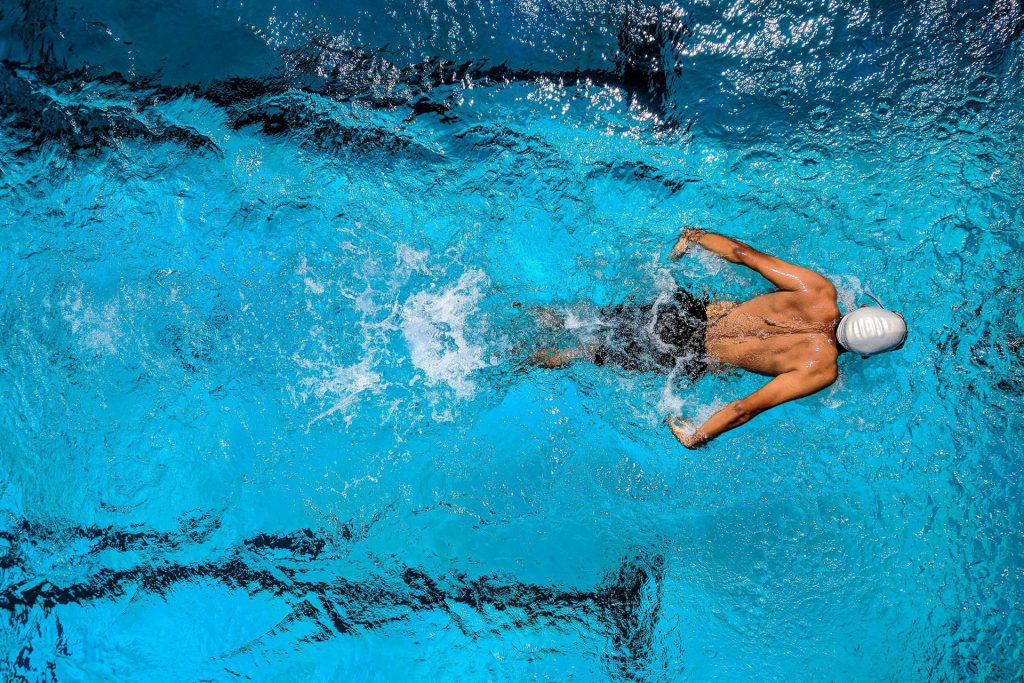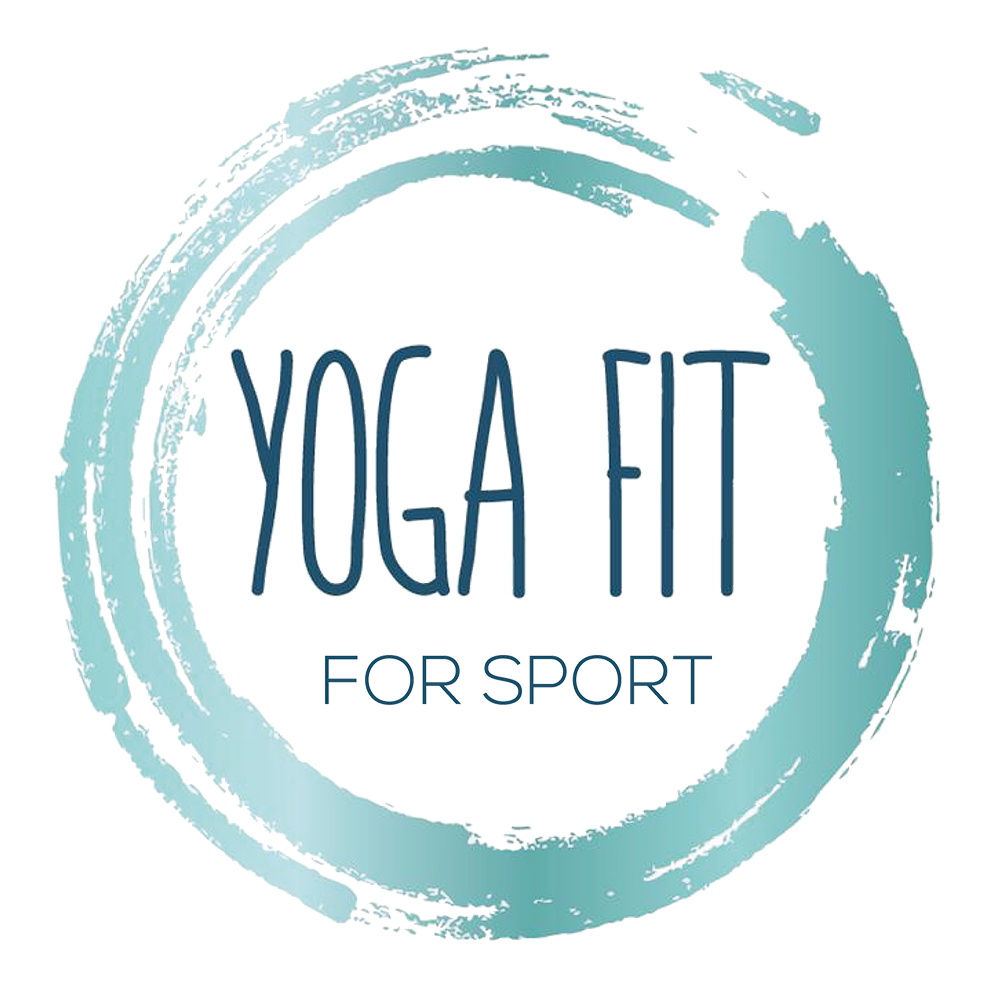Yoga Fit for Sport
Swim
Swimming is a unique sport. It’s one of the few where hypermobility can be a benefit and where you might hear a coach telling you to breathe less! It’s non-weight bearing with a highly repetitive overhead movement. Unsurprisingly, it places a huge demand on the shoulders.
They not only need to be highly flexible to achieve the optimum technique and reduce frontal drag, but also strong, to get the most propulsion out of the pull phase. This delicate balance of flexibility and strength, or in other words; mobility, is especially important to avoid injuries such as swimmers shoulder or shoulder impingement syndrome (SIS).
Swimming Biomechanics
Swimming places huge demand on the upper body. It needs to be exceptionally mobile, meaning both flexible and strong for great technique and performance. The thoracic cage needs to be mobile in order to rotate easily when breathing. The shoulder capsule needs to work in internal rotation during the pull phase, while the scapula keeps elevated at the same time. This means that while pulling in internal rotation, the shoulder is kept ‘shrugged’ or close to the ear, requiring great mobility in the scapula. Whilst this aspect is helpful for technique and efficiency, it’s the lats and triceps that provide the majority of the strength or power in the pull phase.
Given that swimming involves so much repetitive overhead movement, it’s important that swimmers have flexibility and mobility in the shoulders to avoid injury. SIS or swimmer’s shoulder is common, whereby the supraspinatus tendon gets pinched by the acromion process bone. This can be avoided as long as there is enough external rotation when the arms raise overhead. Therefore, training external rotation of the shoulder is something swimmers should include in their training.


Power to the arms and legs is initiated in the core. With a strong core, that power can also be used efficiently to drive our momentum directly forward, acting as extra propulsion through the water. Otherwise, with a weak core, energy is lost from laxity of the trunk, creating drag and inefficiency.
The hip flexors should be in extension while swimming. This keeps the legs and feet high in the water so they don’t create drag. In order to achieve this, the glutes and hamstrings will be engaged and the back in a slight extension. The hips will also work in rotation with every stroke. The rotation is controlled and almost lingers at the end range, particularly over longer distances. The effect of this is that it helps swimmer’s glide smoothly through the water while the opposite hand is reaching forward.
Being able to point the toes is another aspect of efficient swimming. This is known as plantar flexion and is important in order to reduce drag from the feet.
Strength and mobility of the entire upper body will be a key focus for swimmers. This area should be trained in every plane of motion possible. The shoulder capsule should be trained in 360 degrees as well as internal and external rotation. Thoracic twists will be important to assist with the breathing motion in the water. The scapulae should be mobilised and trained in elevation in particular. Whilst performing these motions, key muscles of the rotator cuff, pecs, traps, deltoids and trapezius muscles will be recruited. The weight bearing poses of yoga can be used for strength and stability exercises. For example, dolphin pose and variations of it are helpful for increasing shoulder stability. Whereas gentle backbends, chest and shoulder opening poses can assist with the flexibility required for healthy movement and great swimming performance.
When training the core, exercises should include connection to the limbs. This means that power is trained to transfer from the core to the arms performing the pull and the legs performing the kick. Lateral strength will also be key to improve shoulder and hip connection. Bird-dog pose and variations of it are useful for the purpose of connecting the core to the limbs. Dynamic standing and/or balancing movements that require core stability while the limbs are moving is another great exercise for swimmers.
Yoga naturally involves a lot of hip extension work. The more hip extension the better for swimming, in order to keep the feet high in the water and the whole body long and streamlined. Locust pose will be effective, as it also engages the key muscles of the back, glutes and hamstrings that facilitate strong hip extension. Variations of locust can also be used effectively, for example, it can be paired with feet flutters to mimic the kick action.
The hips need to rotate in swimming, this requires a lot of freedom not only in the hips but also the low back and torso. This can be trained very effectively in a yoga program through mobilisation and lengthening work.
Plantar flexion exercises should focus for swimmers, in order to reduce drag from the feet. The sole of the foot needs to be strong in order to maintain this shape over long swim sessions. Pointing and curling the toes down at the same time is a great way to train this often neglected area.
Breathing, or coping with a lack thereof, is a key component for swimming. The greater a swimmer’s tolerance to carbon dioxide (Co2), the stronger and more capable of endurance they will be. This is also a key aspect of keeping calm in the water. A Co2 build-up creates a strong urge to breathe. This feeling of air hunger can induce panic if a swimmer is not trained or accustomed to it.
The nature of swimming involves a quick inhale and a steadier, slower exhale over several strokes. This also invokes Co2 build-up that a swimmer needs to adapt to in order to perform well. A keen sense for the rhythm of the breath is also an indicator of a strong swimmer and someone who can put in big sessions in the water.
Training a high tolerance to Co2 can be achieved very effectively through yoga. Breath retention and hypoventilation practises hugely increase Co2 tolerance and can be built up steadily and safely. The slow, controlled exhales and quick inhales required in the pool can also be simulated through breathing exercises, so it feels more natural in the water. Yoga itself is a moving meditation and a breath-led practise, so it can also help swimmers gain agency over their breath and a good sense of its rhythm, which will help massively in the water.

